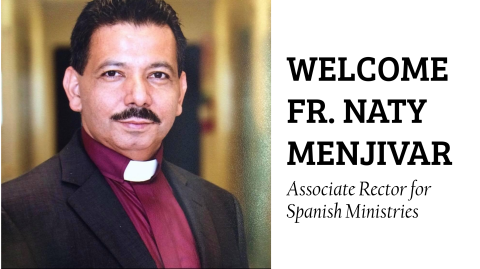I have been reading about the differences between the original group of “Followers of the Way” and the Church of today. The movement was a “fellowship of those who follow Jesus and who are loved by him and who love each other” (Doyle, The Jesus Heist, 16.) This Ecclesia of the friends of Jesus (A fellowship in the love of the Lord) developed over the years into a religious institution which has become a “simulacrum that rarely mirrors the ecclesia,” (Ibid.) A simulacrum is both “an image or representation of someone or something, as well as an unsatisfactory imitation or substitute,” (Dictionary.com.) We moved from a group of people bound together by the love of Jesus of Nazareth to an institutional church deeply concerned about buildings, programs, budgets, risk-management, insurance, and pension funds.
So, we have two realities at play when we think of Church. The visible reality of buildings, structures, hierarchies, dogma, magisterium, and complex administrative structures. This is the Church as it has developed in the world throughout the centuries. We also have another reality at play: At heart, the Church is an Ecclesia, or a group of people who gather together in the Love of the Lord to worship our God and to love each other (and the world) as Jesus loves us.
Clergy are called to churches to fulfil two different missions: The first is well known, spoken out-loud, and widely acknowledged among the members and the Diocese. Priests are called to be a pastor to the Ecclesia that gathers to worship the Lord and serve the world. This means to preach the Gospel, celebrate the holy sacraments, and lead the parish in ministry to the least and the lost in Jesus’ name. This noble mission encompasses much of what we do: We teach, preach, engage in pastoral care, evangelize, preside over the Holy Eucharist, etc. For me, there is little to no anxiety related to serving the Ecclesia, other than normal stress associated with day-to-day busy-ness. This is the primary reason people go to seminary and spend their lives in ministry.
The second mission for which priests are called to churches is not widely spoken about or acknowledged, but it remains a deep aspiration (and expectation) in most parishioners’ hearts and minds: pastors are called to take care of the institution. In other words, we are called to GROW the church. The growth of the institution is an ever-present concern for most priests I know. No pastor wants to turn the lights off after the last funeral, call the Diocese to notify them of the closure, and mail the keys to the Bishop on the way to his or her nursing home. If there is one thing seminaries train us to pray for and to desire with all our heart is the growth of our communities.
At the beginning of this program year I find myself asking the following questions, (Most of which are related to the health of the institution itself:) Have we lost momentum, and will people return to in-person Sunday Church? Will our children log on to Zoom Youth Groups and Sunday School after spending six to seven hours a day in front of a computer screen for school? Will cyber-evangelism be sufficient to fill our pews? Will the lack of on-site programming affect stewardship for the Fall ingathering campaign?
Most priests I know will have a hard time acknowledging these concerns. All things considered, most of us just want to preach the Gospel and lead people into servant ministry. Yet, the growth of the institution is so ingrained into our models of “successful ministry” that I often find myself thinking about average Sunday attendance (ASA,) the necessity of legacy trust funds to ensure our future viability, the maintenance needs of our buildings and grounds, etc.
Bishop Doyle challenges us all to wake-up and adopt a missiological stance that is closer to the Ecclesia of Jesus than the institutional Church that began to develop after Emperor Constantine in the 4th century. He challenges us to take the red pill (to understand this metaphor you must watch the movie The Matrix or read Doyle’s book, The Jesus Heist.) We must choose a radical Jesus more concerned with people than with morality, dogma, buildings, or institutions. “Any organization concerned with itself could not be the ecclesia of God,” (Doyle, 33.) The institution has become insular and self-focused to a degree that it has become disconnected from the concerns and needs of the people to whom God is sending us. We need to realize that “The Church is the people and not the steeple,” As Rick Warren states. Doyle believes the Gospel of Jesus has been highjacked by the institution, with its voracious appetite for centralization, internal growth, and unending prosperity.
I agree with Bishop Doyle. The time has come for a new missional perspective. But I wonder if he romanticizes the early church too much. I wonder if he believes there was a “perfect” community of which we have been a simulacrum, so distanced by time and space from the original that we no longer represent that perfect reality. I wonder if he confuses the Ecclesia as the spiritual Bride of Jesus, which remains a reality to be realized at the end of days, with the motley crew of disciples trying to decide who is most important among them, who should sit at the right and left side of the heavenly throne, and whether Paul is a hellish heretic or an apostle.
I believe the perfect Ecclesia has never existed. Let us not forget that the first movement after the resurrection and ascension of Jesus is towards institutionalization. House churches become networks of churches, which become geographical zones ruled by bishops, which become Dioceses, which become 5 different patriarchates (of which Rome was one.) The movement is towards hierarchy: Three orders of ordained ministry, which developed way before Christianity became an Empire Church. To return the Church to this pure community about which Doyle speaks, we would have to reconsider our dependance and reliance on the New Testament itself, since most of these letters and books were written by Second Generation Christians, who seemed very concerned about institutionalization, as Doyle himself acknowledges, “A second generation of Christians would grow and build a great church organization,” (Doyle, 39.)
I do not think we can separate the Ecclesia from the Church. And I believe Bishop Doyle agrees with this, “I hope we can see the ecclesia as the spiritual Israel while at the same time accepting that, like human beings, the church is a fallen creature,” (Ibid, 58.) I do agree with Doyle that we must be careful not to read Holy Scripture with an “Institutional Church” lens. When we do this, “We steal Christ and the gospel away,” (Ibid, 57.)
The challenge for me and other pastors is to minister to the Ecclesia as we experience this reality today, while being responsible stewards of the institution. This dual task is central to the long-term survival of this imperfect church. I must minister to people and ensure the lights remain on in the church. There will be a time when we will no longer need the messy reality of a church budget but ensuring the longevity of our community will entail doing the administrative tasks often associated with Institution-building. Of course, the only true way to grow is to engage in life-changing ministry with those outside the walls of our church. The job must be both-and, not either-or.
Blessings to all,
Fr. Roman+





